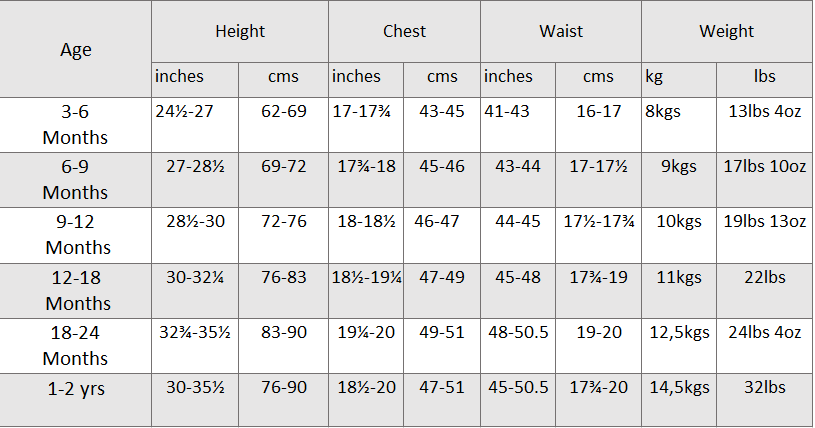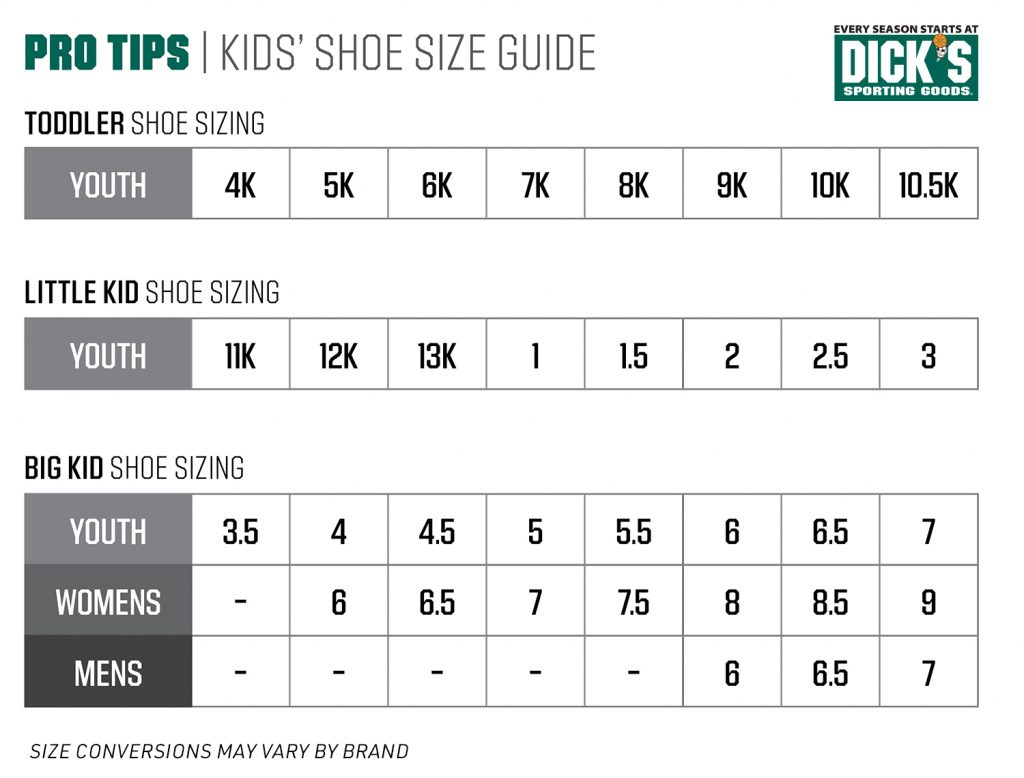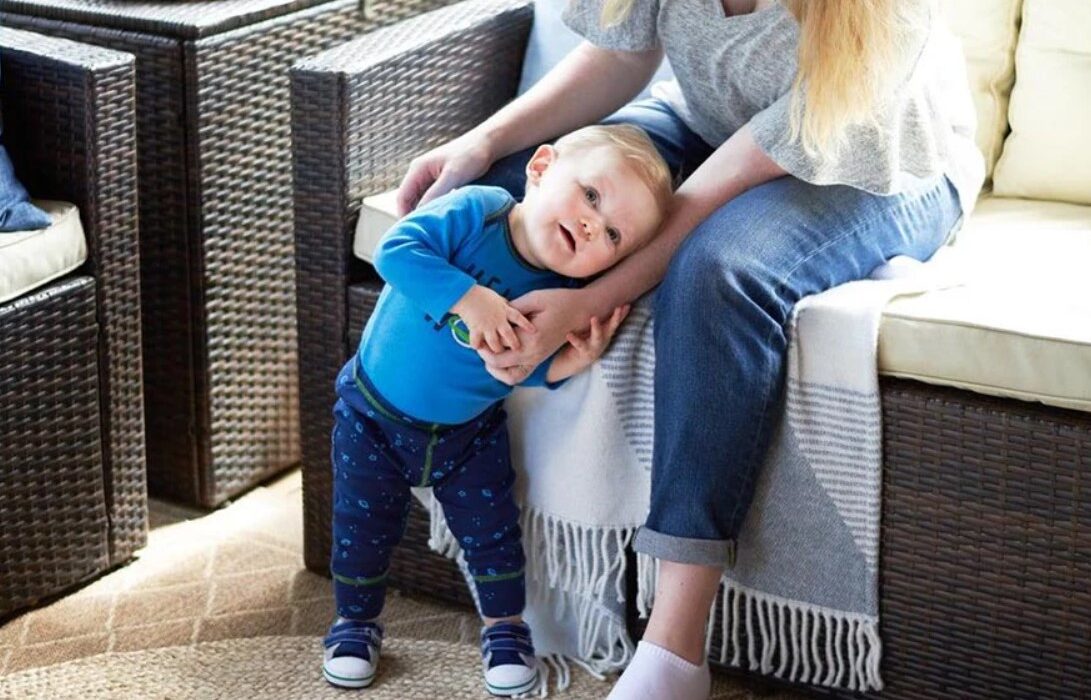Toddler sizing typically ranges from 2T to 5T. Sizes represent the child’s age and height range.
Understanding toddler sizing can be challenging for parents. Sizes reflect age but also height and weight. For example, 2T is for toddlers around two years old. This sizing helps parents choose the right fit for their child. Each brand may have slight differences in their sizes.
Always check the size chart when buying clothes. A good fit ensures comfort and allows for movement. Remember that toddlers grow quickly, so always consider purchasing a size up. Familiarizing yourself with toddler sizing can make shopping easier and more enjoyable. With the right knowledge, you can find the perfect outfits for your little one.
Table of Contents
The Basics Of Toddler Sizing
Toddler sizing can be tricky. Understanding how it works helps parents choose the right clothes. Sizes vary by brand and style. Familiarity with sizing charts can simplify shopping.
Age Vs. Size: A General Guide
Most toddler clothing sizes are based on age. This table shows a general guide:
| Age | Size |
|---|---|
| 1-2 years | 2T |
| 2-3 years | 3T |
| 3-4 years | 4T |
| 4-5 years | 5T |
This guide offers a basic idea. Sizes may differ by brand. Always check the size chart before buying.
Understanding The Range Of Toddler Sizes
Toddler sizes typically range from 2T to 5T. Some brands also offer sizes for older toddlers, like 6T.
- 2T: Fits toddlers around 1-2 years.
- 3T: Designed for 2-3 year olds.
- 4T: For toddlers aged 3-4 years.
- 5T: Suitable for 4-5 year olds.
Sizes can also vary by weight and height. Consider your toddler’s measurements.
Use a measuring tape to find accurate sizes:
- Measure the child’s height.
- Measure the child’s chest.
- Measure the child’s waist.
These measurements help select the best fit. Always prioritize comfort and ease of movement.
Sizing Systems Explained
Toddler sizing can be confusing. Different regions use different systems. Understanding these systems helps parents choose the right size for their little ones.
Us Vs. European Sizing
US and European sizes differ in many ways. Here’s a quick comparison:
| US Size | European Size |
|---|---|
| 2T | 86 |
| 3T | 92 |
| 4T | 98 |
| 5T | 104 |
In the US, toddler sizes often include “T” for toddler. European sizes use a number that indicates the height in centimeters. This can create confusion for shoppers.
The Meaning Behind The Numbers
Understanding sizing numbers is essential for finding the right fit. Here’s what the numbers mean:
- US Sizes: Often based on age (e.g., 2T for two years).
- European Sizes: Based on the child’s height in centimeters.
For example, a size 92 in Europe fits a child around 92 cm tall. A size 3T in the US is generally for toddlers around three years old.
Measuring your child helps ensure a good fit. Use a measuring tape to check their height and weight. Compare those numbers with size charts before buying clothes.
Interpreting Size Labels
Understanding toddler sizing can be tricky. Size labels often confuse parents. They use numbers, letters, and brand-specific terms. Knowing how to interpret these labels helps you choose the right fit for your child.
Deciphering Numbers And Letters
Toddler sizes typically range from 2T to 5T. The “T” stands for “toddler.” Here’s what the numbers mean:
| Size | Age Range | Height | Weight |
|---|---|---|---|
| 2T | 2 years | 33-36 inches | 25-28 lbs |
| 3T | 3 years | 36-39 inches | 28-32 lbs |
| 4T | 4 years | 39-42 inches | 32-36 lbs |
| 5T | 5 years | 42-45 inches | 36-40 lbs |
Sizes can vary by brand. Some brands use “0-3M,” “6-12M,” etc. These labels indicate months instead of years. Check size charts for accuracy. Always measure your child to ensure a proper fit.
Tips For Reading Brands’ Unique Sizing
- Check the Size Chart: Always review the brand’s size chart.
- Read Customer Reviews: Look for comments about sizing accuracy.
- Consider Fit Preference: Some parents prefer a looser fit.
- Try Before You Buy: If possible, try clothes on your child.
- Look for Adjustable Features: Pants with elastic waistbands offer flexibility.
When in doubt, choose a size larger. Kids grow quickly. A slightly bigger size lasts longer. Always prioritize comfort over style. Happy shopping!

Credit: www.mine4sure.com
Weight And Length Considerations
Understanding toddler sizing involves knowing weight and length. These two factors significantly influence how clothes fit your child. Accurate measurements help you find the right size for comfort and mobility.
Importance Of Weight In Sizing
Weight plays a crucial role in toddler sizing. Here are some key points:
- Clothing sizes often correlate with weight ranges.
- Heavier toddlers may need larger sizes for comfort.
- Lightweight toddlers might fit into smaller sizes.
Keep in mind that weight varies among toddlers. Always consider your child’s unique shape. Use a scale to check your toddler’s weight regularly.
Height Measurements And Fit
Height is equally important in finding the right fit. Accurate height measurements ensure that clothing fits well. Here’s how to measure:
- Stand your toddler against a wall.
- Use a flat object to mark their height.
- Measure from the floor to the mark.
Compare the height measurement with size charts. Most brands provide sizing charts based on weight and height. This helps you select the best size.
| Size | Weight (lbs) | Height (inches) |
|---|---|---|
| 2T | 24-28 | 32-36 |
| 3T | 29-34 | 36-40 |
| 4T | 35-40 | 40-44 |
Choose the right size based on these measurements. Proper fit ensures your toddler can move freely and comfortably.
The Role Of Baby Clothing Sizes
Understanding baby clothing sizes is essential for parents. It helps in choosing the right fit for growing toddlers. Proper sizing ensures comfort and mobility for little ones. Babies grow quickly, so knowing the sizes can save time and money. Let’s explore how toddler sizing works.
Transitioning From Baby To Toddler Sizes
As babies grow, they move from baby sizes to toddler sizes. This transition usually happens around 12 months. Here are some key points to consider:
- Baby sizes typically range from newborn to 12 months.
- Toddler sizes start at 2T and go up to 5T.
- Weight and height influence size selection.
- Always check sizing charts for each brand.
Parents should measure their child regularly. This ensures you choose the correct size. Sizes can differ between brands, so be cautious.
Overlap In Baby And Toddler Sizing
Some overlap exists between baby and toddler sizes. This can lead to confusion. Understanding this overlap helps in making better choices.
| Size | Age | Weight Range | Height Range |
|---|---|---|---|
| 12M | Up to 12 months | 20-24 lbs | 28-30 inches |
| 18M | 12-18 months | 24-28 lbs | 30-32 inches |
| 2T | 2 years | 26-30 lbs | 32-36 inches |
Knowing these ranges helps you make informed choices. Selecting the right size is crucial for your child’s comfort. Always prioritize fit over style.
Shoe Sizing For Toddlers
Finding the right shoe size for toddlers is crucial. Comfortable shoes support little feet as they grow. Proper fit helps prevent foot problems later.
Measuring Little Feet
Measuring your toddler’s feet is easy. Follow these simple steps:
- Gather materials: a ruler, paper, and a pencil.
- Place the paper on a flat surface.
- Have your toddler stand on the paper.
- Trace around the foot carefully.
- Measure the longest distance from heel to toe.
Use the measurement to find the correct shoe size. Remember to measure both feet. One foot may be larger than the other.
Frequency Of Size Changes
Toddler feet grow quickly. Size changes occur every few months. Here’s a typical growth pattern:
| Age (Years) | Average Shoe Size | Growth Interval |
|---|---|---|
| 1 | 3 to 4 | 2 to 3 months |
| 2 | 5 to 6 | 3 to 4 months |
| 3 | 7 to 8 | 4 to 6 months |
| 4 | 9 to 10 | 6 to 12 months |
Check your toddler’s shoe size every three months. Catching growth spurts early helps ensure comfort.
Signs your toddler needs new shoes include:
- Complaints of discomfort
- Visible wear on shoes
- Toes touching the front of the shoe
Seasonal Sizing Strategies
Understanding toddler sizing is crucial for parents. Seasonal changes affect clothing needs. Choosing the right sizes ensures comfort and flexibility. Here are key strategies to consider.
Planning For Growth
Toddlers grow quickly. Sizing up can save money in the long run. Here are tips for planning:
- Buy Ahead: Purchase clothes a size bigger.
- Consider Fabric: Choose stretchy materials.
- Check Size Charts: Refer to brand-specific sizing guides.
Keep these points in mind:
- Monitor your child’s growth regularly.
- Look for adjustable waistbands for longer wear.
- Layering items can extend the life of outfits.
Layering Considerations
Layering is effective for changing weather. It allows flexibility in dressing. Consider these tips:
- Base Layers: Use lightweight shirts and leggings.
- Middle Layers: Add sweaters or cardigans for warmth.
- Outer Layers: Select jackets that are easy to remove.
Remember these layering strategies:
| Layer Type | Materials | Best For |
|---|---|---|
| Base Layer | Cotton, Bamboo | Cool Weather |
| Middle Layer | Wool, Fleece | Colder Days |
| Outer Layer | Waterproof, Windbreaker | Rainy or Windy Days |
Layering keeps toddlers comfortable. Adjust layers based on activity level. It promotes ease of movement.
Size Variations Across Brands
Understanding toddler sizing can be tricky. Each brand has its own sizing standards. This leads to confusion for parents. Knowing how to navigate these differences is essential.
Brand-specific Sizing Charts
Every brand offers a unique sizing chart. These charts help determine the right fit for your child. Here are some popular brands with their general sizing:
| Brand | Size (12-18 months) | Size (18-24 months) | Size (2T) |
|---|---|---|---|
| Brand A | 30 inches | 32 inches | 34 inches |
| Brand B | 29 inches | 31 inches | 33 inches |
| Brand C | 31 inches | 33 inches | 35 inches |
Check the sizing chart before buying. Sizes may vary even within the same age group.
Navigating Inconsistent Sizing
Inconsistent sizing across brands can be frustrating. Here are some tips to help you:
- Measure your toddler regularly. Keep track of their height and weight.
- Read reviews for insights on fit. Reviews often mention size discrepancies.
- Order multiple sizes when unsure. This allows for easy returns.
- Check return policies before purchasing. Some brands have flexible policies.
Staying informed will help you make the best choices. Understanding these variations ensures your toddler stays comfortable and stylish.
Practical Tips For Shopping
Shopping for toddler clothes can be a fun adventure. Knowing how toddler sizing works makes it easier. Here are practical tips to help you shop smart.
Trying Clothes On In-store
Visiting a store allows your toddler to try on clothes. Here are some tips for a successful shopping trip:
- Choose the Right Time: Shop when your toddler is well-rested.
- Bring Essentials: Snacks and toys can keep your child happy.
- Check Size Labels: Sizes can vary by brand. Always check.
- Try Multiple Sizes: Fit varies. Try one size up and one size down.
- Look for Comfort: Ensure clothes are easy to put on and remove.
Pay attention to your child’s reactions. If they seem uncomfortable, try a different outfit. Comfort is key for toddlers.
Online Shopping: Best Practices
Online shopping offers convenience. Follow these best practices to find the right fit:
- Know Measurements: Measure your toddler’s height and weight.
- Read Size Charts: Always refer to the specific brand’s size chart.
- Check Return Policies: Make sure returns are easy and free.
- Look for Reviews: Customer feedback can provide insights on sizing.
- Order Multiple Sizes: If unsure, order a couple of sizes to try.
Using these tips will help you navigate online shopping. Enjoy finding stylish and comfortable clothes for your toddler!
Comfort And Mobility
Comfort and mobility are key for toddlers. They need clothing that allows them to move freely. Proper sizing plays a big role in achieving this. Let’s explore how to balance fit and freedom while choosing the right materials.
Balance Between Fit And Freedom
Finding the right balance between fit and freedom is essential. Clothes should not be too tight or too loose. Here are some tips to consider:
- Room to Grow: Choose clothes that offer some extra space.
- Easy to Put On: Look for stretchy necklines and waistbands.
- Adjustable Features: Opt for adjustable straps or elastic bands.
These features help toddlers dress themselves with ease. They also support their natural movements.
Materials And Toddler Movement
The right materials enhance comfort and support movement. Soft, breathable fabrics are ideal for toddlers. Here are some commonly used materials:
| Material | Benefits |
|---|---|
| Cotton | Soft, breathable, and hypoallergenic. |
| Spandex | Provides stretch and flexibility. |
| Bamboo | Soft, moisture-wicking, and eco-friendly. |
These materials allow toddlers to move freely. They stay comfortable during playtime. Parents should always check for tags that indicate fabric content.
Special Considerations
Understanding toddler sizing requires special attention. Every child grows at their own pace. This can make choosing the right size tricky. Parents need to consider adjustable features and body types.
Adjustable Features For Growth
Many toddler clothes come with adjustable features. These features help accommodate rapid growth. Here are some common adjustable features:
- Elastic Waistbands: Stretchy bands provide comfort and fit.
- Adjustable Straps: Straps can be lengthened or shortened.
- Snap Closures: These allow for easy size adjustments.
- Foldable Cuffs: Cuffs can be rolled down as kids grow.
These features extend the life of clothing. Parents can save money by buying fewer items. Look for these options while shopping.
Clothing For Different Body Types
Toddlers come in various shapes and sizes. It’s important to consider body types. Here are some common body types:
| Body Type | Clothing Suggestions |
|---|---|
| Petite | Choose slimmer fits for better comfort. |
| Chubby | Opt for loose, breathable fabrics. |
| Tall | Look for longer lengths and adjustable features. |
Understanding your toddler’s body type helps in choosing the right clothes. It ensures comfort and freedom of movement.

Credit: www.dickssportinggoods.com
The Growth Spurt Factor
Understanding toddler sizing can be tricky. Toddlers grow rapidly. Growth spurts can happen unexpectedly. These spurts affect clothing size. Parents must stay prepared for these changes.
Predicting Size Changes
Growth spurts usually occur during specific ages:
| Age | Typical Growth Spurt | Size Change |
|---|---|---|
| 0-3 months | Rapid growth | Newborn to 3 months |
| 6 months | First major spurt | 3 to 6 months |
| 12 months | Second major spurt | 6 to 12 months |
| 18 months | Growth slows | 12 to 18 months |
| 2-3 years | Final toddler spurt | 18 months to 2T |
Keep an eye on growth patterns. Measure height and weight regularly. Use these measurements for size predictions.
Buying Ahead: Pros And Cons
Buying clothes ahead can save time. Consider the following:
- Pros:
- Convenience during busy seasons.
- Ability to find sales and discounts.
- Less last-minute shopping stress.
- Cons:
- Growth spurts can make clothes too small quickly.
- Buying wrong sizes can lead to waste.
- Styles may change before they fit.
Evaluate your toddler’s growth. Make informed decisions when buying ahead.
Caring For Toddler Clothes
Caring for toddler clothes is essential for longevity and fit. Proper care helps maintain size and shape. It also saves money by keeping clothes usable longer.
Wash Care For Sizing Preservation
Washing toddler clothes requires special attention. Follow these tips to preserve size and quality:
- Read Labels: Always check the care label for washing instructions.
- Use Cold Water: Cold water prevents shrinking and fading.
- Gentle Cycle: Choose a gentle cycle to protect fabrics.
- Avoid Bleach: Bleach can damage colors and fibers.
- Air Dry: Hang clothes to dry. This avoids heat damage from dryers.
Following these steps ensures clothes stay true to size. Regular washing keeps them clean and fresh. It also allows for easier hand-me-downs.
Storing Outgrown Clothes
Outgrown clothes can be stored wisely. Here’s how to do it:
- Clean First: Always wash clothes before storing.
- Use Plastic Bins: Store clothes in clear plastic bins. This keeps them safe and visible.
- Label Bins: Label each bin with size and season.
- Avoid Attics: Keep clothes in a cool, dry place. Attics can get too hot and humid.
Storing properly keeps clothes in great condition. This is perfect for younger siblings or future use.

Credit: www.pinterest.com
Frequently Asked Questions
How Do I Measure My Toddler For Sizing?
To measure your toddler, use a soft measuring tape to record their height and weight, then compare with size charts.
What Size Is A 2t In Toddler Clothing?
A 2T typically fits toddlers aged 2-3 years, with measurements around 34-36 inches in height and 30-32 pounds in weight.
How Do Toddler Sizes Differ From Baby Sizes?
Toddler sizes cater to active children aged 1-3 years, while baby sizes are for infants, focusing on comfort and ease of dressing.
Should I Buy Toddler Clothes Larger?
Buying slightly larger clothes allows for growth, but ensure they aren’t too big to avoid safety hazards during play.
Conclusion
Understanding toddler sizing is essential for parents. It helps you choose the right clothes for your little ones. Always check size charts and measurements. Remember that sizing can vary between brands. This knowledge will make shopping easier and more enjoyable.
Happy dressing your toddlers in the perfect fit!







